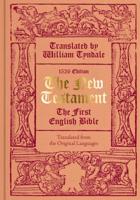Publisher's Synopsis
Those who have been fortunate enough to read "The Gospel for an Age of Doubt," by Dr. Henry Van Dyke, will welcome this companion volume. Dr. Van Dyke's style is always simple, direct, and convincing. One epigram following hard upon another gives added force to the treatment of the subject. Dr. Van Dyke has not given us anything startlingly new, but he has said things in a new and attractive way. Something of the style may be gathered from the following excerpt:
"Doubt is the blinding mist that rises between man's spiritual vision and the eternal truth.
"Sin is the great gulf that separates man's moral character from the divine ideal.
"The pain of doubt is an evidence that man was made for faith. The shame of sin is an evidence that man was created for holiness."
A gospel for humanity must be good news both for doubters and sinners. its sympathy will always be the measure of its power.
Dr. Van Dyke is expectant, hopeful; he believes in a renaissance of religion. "The educated youth of today are turning with a mighty, world-wide movement toward the banner of a militant, expectant, imperial Christianity." While the sins of the world are many, the sin of the world is one. The desire of good and the recognition of evil are the two facts around which human society is organized. The necessity of evil is denied, for the practical knowledge of the nature of evil comes to us through the same moral sense which makes us aware of its existence. "The sense of sin is God's unbroken hold upon the heart of man."
A considerable portion of the book is devoted to a discussion of the atonement. The subject is not handled in the usual way. A definition is scarcely attempted, although when one has finished the book he has a very clear idea at least of what Dr. Van Dyke understands by the atonement. "To attempt to define atonement would be to attempt the impossible. The work of Christ for the saving of sinners can never be confined within the phrases which men invent to describe what they can see of it. It overflows the boundaries. Its fullness makes it indefinable." Another reason which the author gives for not attempting to define atonement is that the very attempt to define it has so often led to misconception and strife between men who believed in it with equal sincerity, and after this he goes on to say that a third reason why definition is not attempted is because none is needed. "The word is clear enough and plain enough already. It denotes a certain mystery - the entire work of Christ in reuniting man to God - the perfect result of that work in the establishment of peace between man and God - the redeeming relation of that work to human sin - the satisfying relation of that work to divine righteousness - it denotes a mystery, but it denotes it in language which brings it into analogy with things that we know, and throws upon it light enough to enable us to see at least some of its essential elements," which, after all, may be taken as a fairly clear exposition of what atonement is.
-Public Opinion, Volume 27 [1899]









